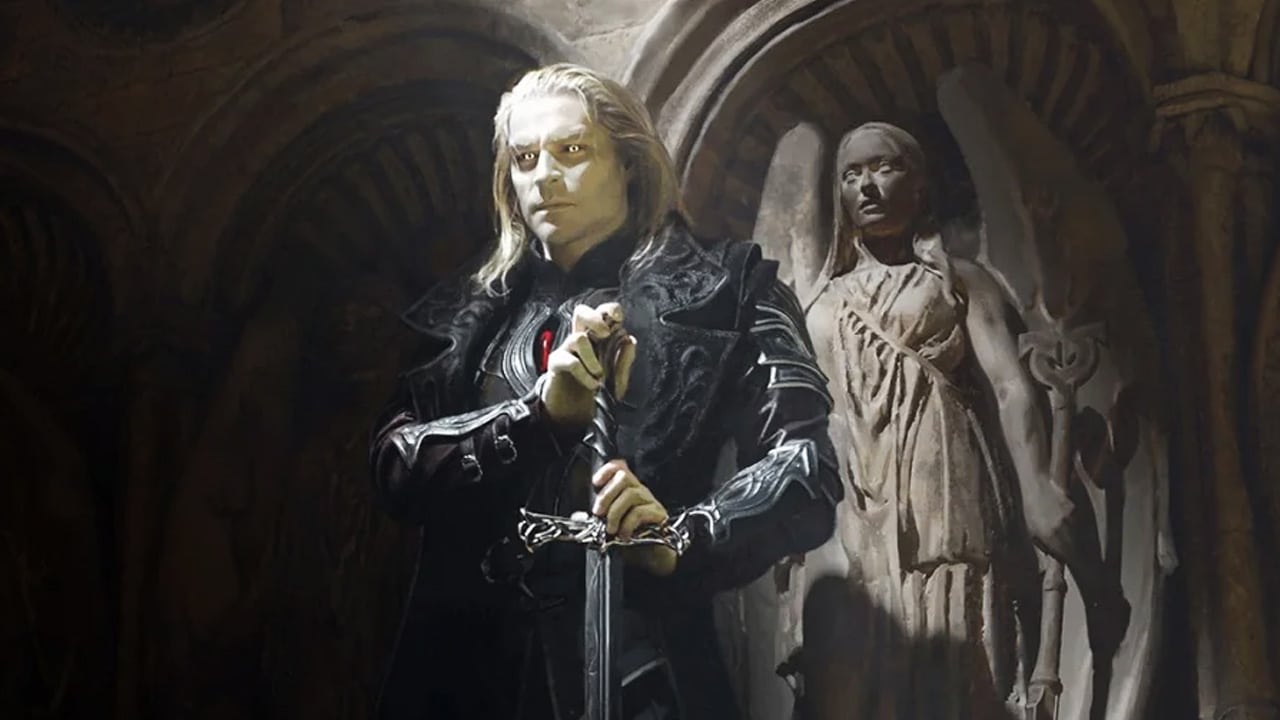For better or worse, Pioneer is quite a controversial format, with a wide range of opinions surrounding it. On the one hand, the innovation available in the format is a true delight, with countless strategies available to players. On the other hand, however, there are those who disdain Pioneer’s top decks, and the play patterns they produce.
Thankfully, even while some top decks are admittedly rather linear, Pioneer is still an incredibly enjoyable and entertaining format. Providing more consistency over a format like Standard, and a longer lifespan for many cards, Pioneer definitely has its upsides. If you’re after a skill-intensive format with a diverse group of decks to choose from, Pioneer might be the right format for you.
Whether you’re looking to get into Pioneer or upgrade your existing deck, you’ll need to know the competition. Thankfully, we’ve got you covered here with all the best decks in the format. So, without any further ado, here are all the best decks within the Pioneer metagame right now!
11 | Boros Convoke

Boros Convoke is a deck capable of blazing-fast starts. By pairing either Venerated Loxodon or Knight-Errant of Eos with cards that help you go wide with tokens, such as Gleeful Demolition. You can cast one of these Convoke Creatures as early as turn one (but generally, your fast starts will happen on turn two).
By going wide with creatures, you also get to maximize Reckless Bushwhacker, which is quite effective at putting your opponent on the backfoot quickly, even if you weren’t able to cast one of the Convoke Creatures.
Boros Convoke recently got a rather powerful upgrade in the form of Inner Sky Warden from The Lost Caverns of Ixalan. Thanks to all the artifacts and token bodies that the deck makes, it is incredibly easy to activate this card’s ability multiple times in a turn, fixing your draws and continually growing its body. This, combined with Rakdos Sacrifice being in a worse spot thanks to metagame shifts makes it an ok choice right now. Just try to dodge Discover combo – as even the Quintorius one does not feel like a good matchup.
10 | Rakdos Sacrifice

This deck is built around a powerful combination of cards many Magic players find frustrating to play against. Witch’s Oven pairs exceptionally well with Cauldron Familiar. Together, you can sacrifice Familiar to the Oven, which generates a Food token. You can then use that Food token to bring back the Familiar, draining your opponent for one. You can repeat this process every turn cycle. The life drain of Familiar is bad enough for Creature-based aggressive decks to beat, but the fact that Familiar can block every turn, get sacrificed to the Oven before damage, and come right back ready to block again next turn makes connecting in combat on the ground a nightmare.
If that wasn’t bad enough, this combination alongside Mayhem Devil can remove a lot of small creatures or simply cut down the opponent’s life total in short order. It is no secret this deck thrives against most aggressive decks, but the resiliency of the Familiar+Oven combo can be quite effective against Midrange decks with lots of removal too. This deck’s one major weakness is that it does not typically close games quickly, so be weary in a field of combo decks.
Despite Rakdos Sacrifice’s popularity declining somewhat thanks to the rise of Lotus Field Combo, that deck’s counters are beginning to become more popular. While Rakdos Sacrifice doesn’t like Lotus Field, it loves to play against fast creature decks like Boros Heroic.
Recent metagame shifts caused by the introduction of Discover combo caused Rakdos Sacrifice’s weaker matchups to temporarily increase in popularity. Creature decks have a tough time beating Discover combo, so they had taken a smaller percentage of the meta, leaving less things for Rakdos Sacrifice to prey on.
9 | Enigmatic Incarnation
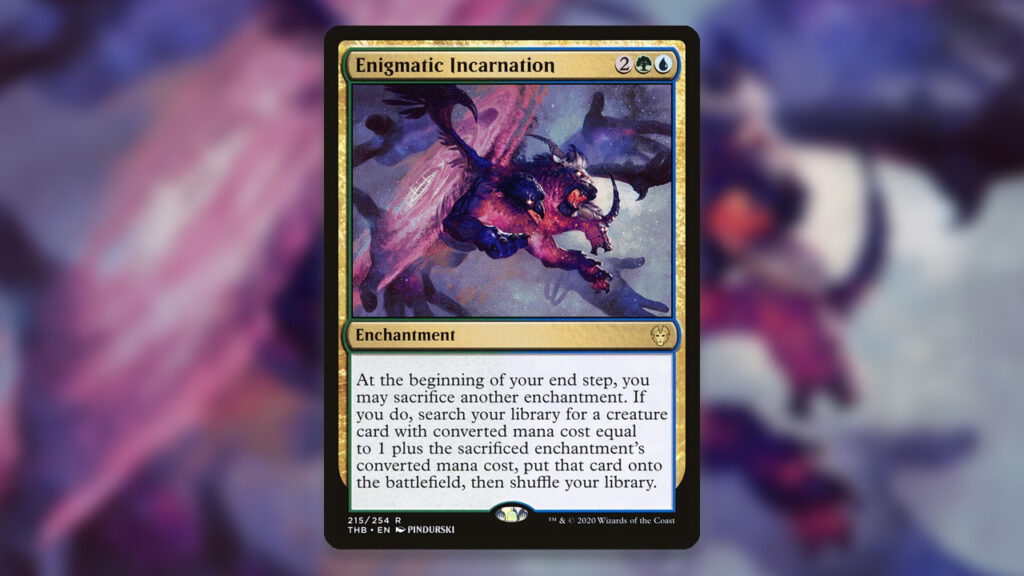
Despite having very little early game to speak of, Enigmatic Incarnation is still quite a powerful deck in Pioneer currently. As you might expect, this deck’s main win condition revolves around Enigmatic Incarnation cheating out incredibly powerful creatures. Alongside what you play from your hand, these can be used to easily overwhelm opponents.
To provide Enigmatic Incarnation with plenty of fuel, this deck unsurprisingly runs quite a few Enchantments. Scaling from one to six mana, these are used to cheat out the deck’s creatures, which are typically only one-ofs. At the top end, this culminates in Atraxa, Grand Unifier, which is a game-ending threat on its own.
Curiously, unlike most Pioneer decks, Enigmatic Incarnation typically plays more than 60 cards. Quite a lot more, in fact, with many lists running at least 80 cards. Within this massive heap, the majority are Enchantments, with creatures playing second-fiddle since they should all be tutored.
Thanks to increased deck size, Enigmatic Incarnation lists typically feature Yorion, Sky Nomad as their companion. While they won’t always come into play, this Companion can nonetheless come in clutch by Flickering creatures with powerful ETB abilities. Overall, despite its oddities, Enigmatic Incarnation has been a fairly strong performer as of late. It even won a recent Pioneer Super Qualifier on Magic Online!
8 | Mono Black
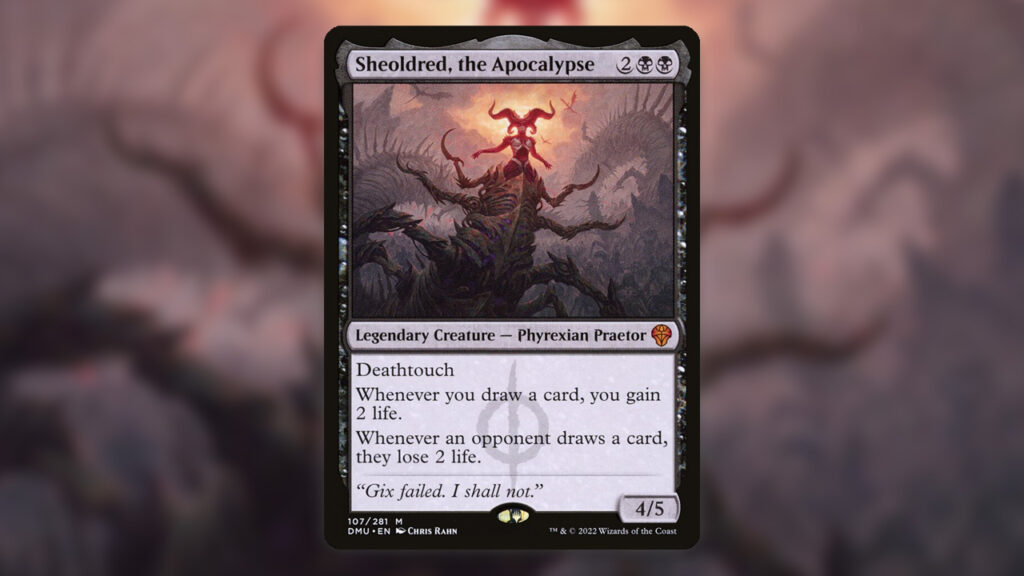
Considering that it took multiple bans to finally clip the archetype’s wings in Standard, Mono Black is unsurprisingly strong in Pioneer. Utilizing some of the best creatures and low-cost removal printed in recent years, this deck is ruthlessly efficient. When in play, each card is a value engine that keeps opponents on the back foot and steadily assures your victory.
Hardly needing any introduction, this mono-black deck obviously uses Sheoldred, the Apocalypse. Constantly punishing opponents for drawing cards, this single creature can shut down entire decks. As if that wasn’t bad enough, Aclazotz, Deepest Betrayal is a recent addition that punishes opponents drawing even more.
To keep these creatures alive and in control, mono-black specializes in kill spells. Boasting a suite of options like Fatal Push and Bitter Triumph this deck ensures nothing else survives. Even if a creature has protection, Liliana of the Veil can make short work of that.
Overall, this mono-black deck can be utterly oppressive to play against. Denying opponents their best cards, and their draws, it’s incredibly difficult to claw your way back. If you’re piloting it yourself, you don’t want to let your opponent have anything. That being said, however, you don’t want to be careless with your removal, as aggressive strategies can offer some resistance.
Read More: The Funniest Alternate Win Conditions In MTG
7 | 5 Color Niv-Mizzet

For better or worse, five-color strategies are absolutely everywhere in MTG nowadays. Thanks to duel lands, Triomes, and new Domain staples, these once-janky strategies have been supercharged beyond belief. Unsurprisingly, alongside the five-color decks in Modern, Standard, and Commander, Pioneer has a potent one of its own.
Focused largely around Niv-Mizzet Reborn it’s safe to say this is a very colorful MTG deck. Not only does this deck boast lands that produce all five colors of mana, but there are dozens of two-color spells too. This gives Niv-Mizzet no end of options, so you’re bound to hit something when they’re played.
Since the deck is named after them, it may seem odd that decks don’t run four copies of Niv-Mizzet Reborn. This oddity is thanks to Bring to Light which effectively acts as a Niv-Mizzet tutor. So long as you cast Bring to Light with five colors of mana, you can tutor any creature in the deck.
Alongside Niv-Mizzet Reborn and Niv-Mizzet Supreme, Omnath, Locus of Creation is another valid tutor target. Providing life gain, mana, and damage depending on your landfall triggers, Omnath keeps the colors following. This should ensure you can keep casting all the myriad multicolored spells this deck offers.
To ensure its effectiveness as a five-color deck, unsurprisingly, this deck also has a few staples. With Leyline Binding and Up the Beanstalk both removal and card draw are sorted. Altogether, this makes 5 Color Niv-Mizzet a very compelling deck that continues to perform admirably.
Read More: Top 10 Best MTG Battle Cards
6 | Abzan Amalia Combo

Released in The Lost Caverns of Ixalan, Amalia Benavides Aguirre has quickly become Pioneer’s latest darling. Capable of blowing up your opponent’s board and swinging in for the win, this new combo is remarkably simple. All you need is Amalia and Wildgrowth Walker and you win.
To explain this combo briefly, Wildgrowth Walker gains you life whenever you Explore, and Amalia Explores when you gain life. In theory, this creates an infinite loop that could go on forever, however, it mercifully cuts off at 20. Here, Amalia’s second ability activates and they completely clear the board of all creatures but themselves. This leaves them standing alone as a 20/20, ready to swing in for the win.
As a two-card combo, this deck is already remarkably reliable and seriously deadly, on its own. For better or worse, there are also 31 other non-land cards that help make each match that much more consistent. Providing protection, life gain, and alternative wincons, there’s no shortage of powerful and useful cards.
Out of all the supplemental spells around this combo, arguably the Instants and Sorceries are most useful. Here, you’ll find four copies of Collected Company, Chord of Calling, and Return to the Ranks. Each allowing you to find the needed combo pieces more easily, these cards are fantastically useful, to say the least.
Since proving itself at Regional Championship events, the Abzan Amalia Combo has become a firm favorite in Pioneer. Steadily growing in popularity and utterly dominating events, it may only be a matter of time before this deck has its wings clipped.
5 | Azorius Control
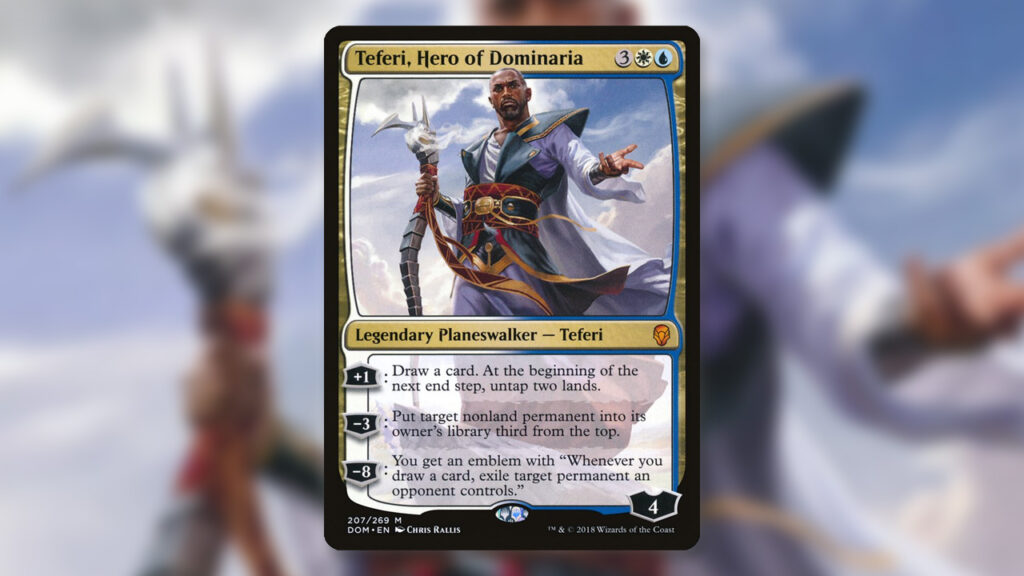
Azorius Control is the premier control deck of the format. Playing blue provides the necessary card draw and Counterspells necessary to gain an advantage over the opponent, and playing white provides the necessary interaction for any creatures the opponent plays, including The Wandering Emperor, which can act both as removal and a value engine. Playing both blue and white together also gives you access to two of the best cards any control deck could ask for.
First, you get to play Supreme Verdict, an uncounterable way to reset the board and buy you tons of time against Creature decks. Second, you can follow up your Supreme Verdict by slamming Teferi, Hero of Dominaria, which provides a stream of card advantage for the rest of the game. Not only that, but Teferi’s plus one ability untaps two lands, giving you the mana to interact on your opponent’s turn and make sure your Teferi sticks around. Its final ability will shut down any hopes your opponent has of coming back into the game. Teferi does everything a control deck could want, and even in a format with plenty of linear strategies, it helps keep this control deck afloat.
For a period of time, Azorius Lotus Control was the best strategy to champion for control players. Currently, both the straight control and the Lotus variants of this deck are rather popular, particularly thanks to their insanely positive Discover combo matchups. With Geological Appraiser combo getting banned, however, its tough to say where Azorius Control will land in the future.
Read More: Top 13 Best Green Cards in MTG
4 | Rakdos Midrange

For those tired of playing against Fable and Sheoldred, the Apocolypse in Standard, unfortunately, you will have to endure this play experience in Pioneer too. Rakdos Midrange was the most popular deck, and generally considered the best deck, in Pioneer for quite some time. That said, the rise of Rakdos Sacrifice caused the deck to temporarily decline in popularity.
Rakdos Midrange plays a lot of the most powerful and efficient cards available in the format. Rakdos Midrange makes use of the elite curve of Bloodtithe Harvester into Fable into Sheoldred. However, this deck also gets to add two premier turn one plays in the form of Thoughtseize and Fatal Push. Having two absurdly efficient pieces of interaction to pair with a proven, powerful game plan gives you a fighter’s chance no matter what matchup you happen to play against.
Notably, thanks to the recent ban announcement, Rakdos Midrange may have a new tool to play with Smuggler’s Copter. This recent unban may replace Reckoner Bankbuster as a card that fulfilled a rather similar role. Smuggler’s Copter may be able to do what the Bankbuster was supposed to in a more efficient way. That said, these cards do function differently, so be sure to keep an eye on top-performing lists to see what ends up being the better option.
3 | Lotus Field Combo
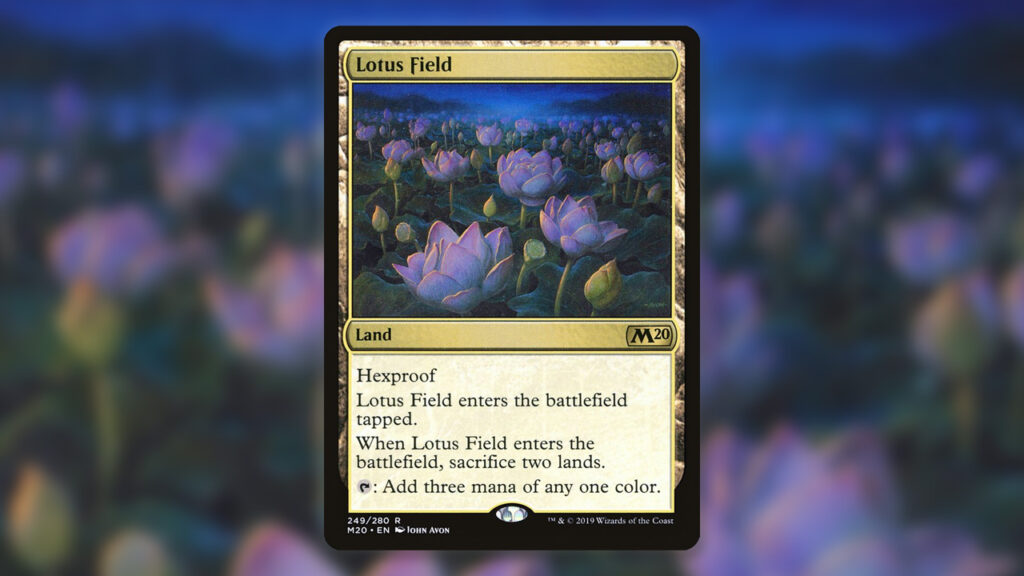
Lotus Field is a deck that revolves almost entirely around the namesake card. The goal of the deck is to get a copy of Lotus Field into play, copy it with Thespian’s Stage, then use a multitude of ways to generate mana via floating mana with each Lotus Field activation and then untapping them. Lotus Field conveniently has Hexproof, so there is no need to worry about it getting destroyed in the process. From there, you can dig for Emergent Ultimatum and assemble a combination of cards that will lead to a win.
The card that really serves as the glue that holds the deck together is Pore over the Pages. Not only does it draw three cards, digging for your win conditions, but it also untaps both Lotus Fields just like Hidden Strings does, netting you mana in the process. Pair that with ways to get back Pore from the graveyard, and it is quite easy to chain them together until you find a way to win the game. This deck is very effective as long as you take the time to learn the ins and outs.
Lotus Field Combo does have positive matchups against all of the decks above it on this tier list, and generally offers some of the most lopsided matchups in the entire Pioneer metagame.
The downside is that anyone who wants to beat the Lotus Field deck can prepare for it. A few Damping Spheres combined with ways to stop you from destroying them is all you need to stop this deck in its tracks. That said, in capable hands, this deck can be a nightmare.
Lotus Field recently won the largest Regional Championship that occurred so far thanks to a new innovation utilizing Discontinuity, but was forced to readjust when Discover combo crashed onto the metagame. The deck was in an odd spot thanks to cards like Damping Sphere being rather popular choices since they hit both Hidden Strings and Discover combo.
Now that Appraiser combo is banned, Lotus Field may experience less hate than previously. That said, recent results suggest that Lotus Field Combo could likely be the best deck in the entire Pioneer format. The only thing holding this back from becoming that, in our opinion, is that the deck is very difficult to learn.
2 | Izzet Phoenix
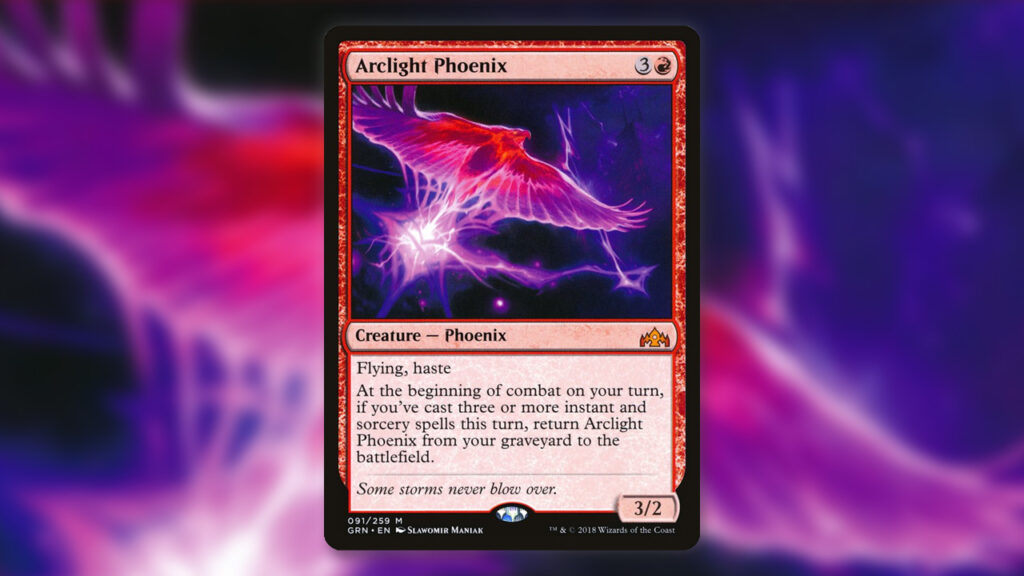
Izzet Phoenix is a strong choice in Pioneer, especially if players aren’t well-equipped with graveyard hate like Rest in Peace. The goal of this deck is to get copies of Arclight Phoenix into the graveyard while maintaining a high spell count in hand. This allows you to consistently cast three Instants or Sorceries to bring back Arclight Phoenixes, making it difficult for your opponent to keep them off the battlefield with traditional removal.
This deck plays a bunch of cheap removal of its own, such as Fiery Impulse, and cheap cantrips like Consider. This helps guarantee the ability to cast multiple spells in one turn. In addition to Pieces of the Puzzle which fuels your graveyard and keeps your hand chock full of spells, this deck plays discard outlets like Lightning Axe to pitch Phoenixes that end up in hand.
Izzet Phoenix wasn’t considered a frontrunner until the release of Wilds of Eldraine. Sleight of Hand and Picklock Prankster helped to innovate the deck, bringing it to the next level. The Phoenix lists now have a Regional Championship under their belt and commonly appear in the top eight of various Pioneer events.
Notably, a new variant of the Phoenix archetype is on the rise, and it looks pretty powerful. Grixis Phoenix, mainly Dimir in nature splashing red for the namesake card, utilizes powerful black spells like Thoughtseize and Bitter Triumph alongside the usual Delve-inspired Phoenix shell. It has proven incredibly powerful in recent weeks.
1 | Rakdos Vampires
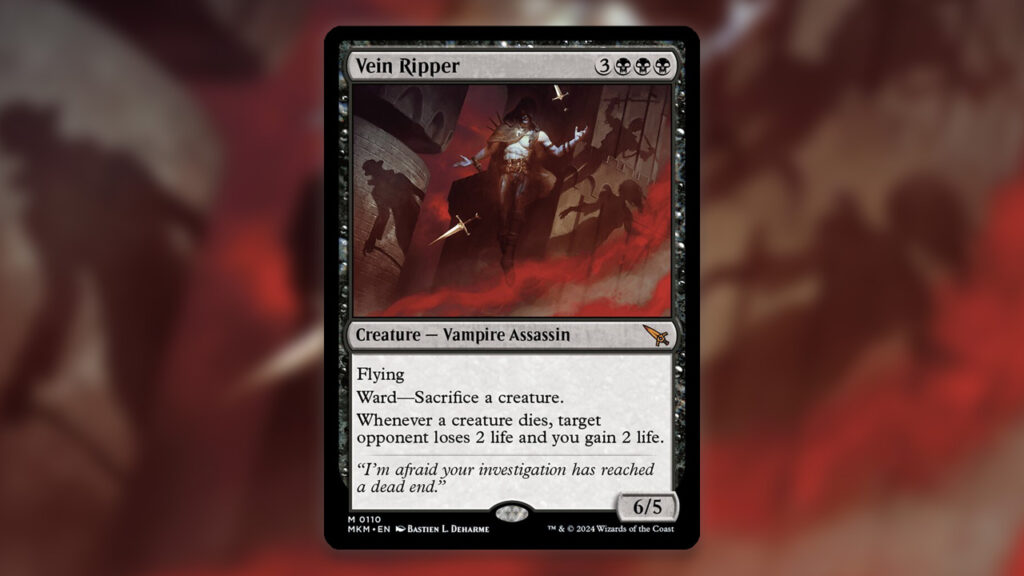
Right now, there’s little question that Rakdos Vampires is the best deck in Pioneer. In the right hands, this deck is capable of great things, as Seth Manfield proved. Taking this breakout to Pro Tour Murders at Karlov Manor, Manfield surprised the competition and took the win! Following this surprise, the deck has quickly become exceedingly popular in Pioneer as the latest meta breaker.
At its core, this deck utilizes four copies of the brand new Vein Ripper. Printed in Murders at Karlov Manor, this card seemed powerful, but its cost kept players from taking it seriously. Proving it’s a real threat, Manfield paired Vein Ripper with Sorin, Imperious Bloodlord to cheat it into play.
Through these two cards combined, Vein Ripper’s potential was supercharged, turning it into an immense early threat. Potentially dropping on turn three, this card boasts Flying 6/5 stats, protection, and drain effect. Without an immediate answer, Vein Ripper can end games exceedingly quickly. Even if it is removed, you still get that handy dandy drain effect.
Beyond Vein Ripper stealing the show, this deck also includes plenty of Rakdos Staples. These include Bloodtithe Harvester and Preacher of the Schism as well as Fatal Push. Unsurprisingly, the deck also runs a copy of Sheoldred, the Apocalypse because of course it does.
While Rakdos Vampires has proved itself to be the best deck, it hasn’t completely overtaken the meta. Looking at more recent Pioneer tournaments, Rakdos Vampires isn’t winning every single event, but it is putting in strong showings. Ultimately, there’s little doubt about this deck’s incredible effectiveness.
Plenty More Decks in the Sea
While we have covered the most popular, played, and powerful decks here today, Pioneer has a lot more archetypes to play. Sure, they might not all be the most competitive, but the format still has a lot of diversity to celebrate. Alongside this, Pioneer decks also see a decent amount of development over time, leading to meta mix-ups.
Between additions to the highly refined Lotus Field Combo and unique Selesnya Elves lists, players are always innovating. Thanks to this, there’s always the distinct possibility of a niche deck suddenly becoming a competitive powerhouse. Ultimately, despite the somewhat polarizing opinions surrounding the format, Pioneer is a great deal of fun.
To make that fun more accessible the format will soon be available on MTG Arena! While Arena won’t be getting every Pioneer card immediately, a tournament-ready Pioneer has been promised by 2024. Hopefully, thanks to the Pioneer Masters set, players will have everything they need. Whatever happens, the influx of Pioneer players from Arena should hopefully propel the format to new heights!
Read More: 10 Best Planeswalkers In Commander
